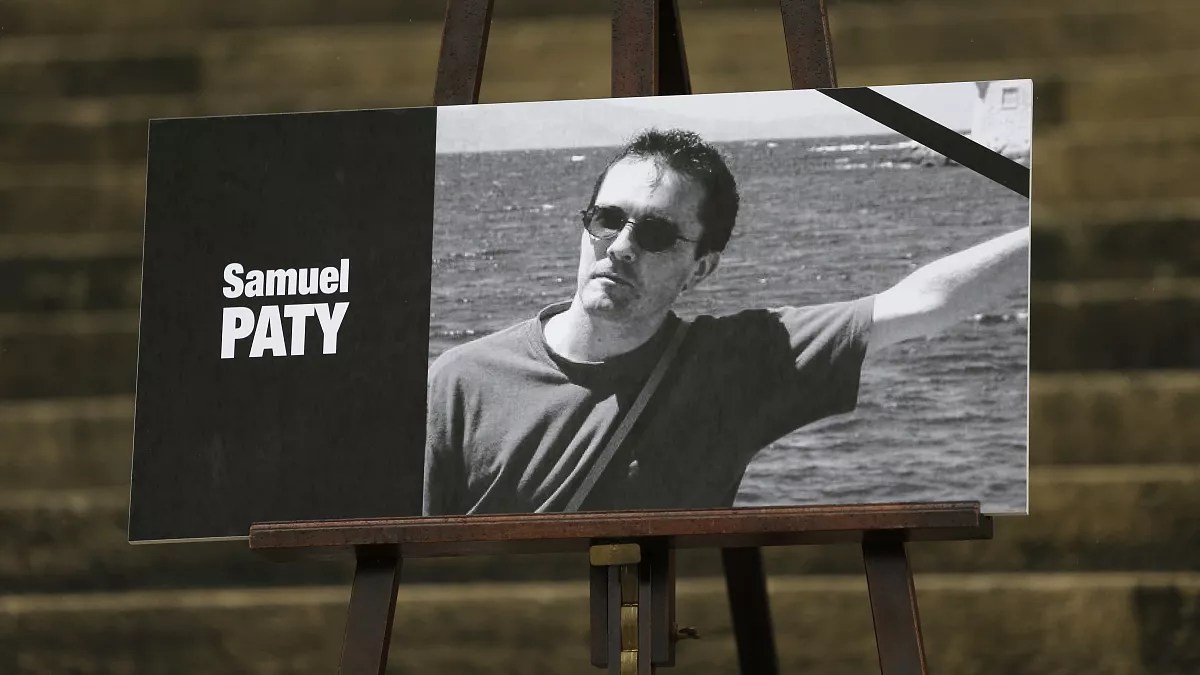Imagine a world shaken by violence, a classroom silenced by tragedy. The assassination of Samuel Paty, a French teacher, sent shockwaves through the nation and beyond. This chilling account, centered on the testimony of a schoolgirl present during the events leading up to the tragedy, unveils a story of profound loss and the complex societal forces at play. We delve into the heart of this tragedy, exploring the events, the aftermath, and the lasting impact on French education and society. Prepare to be moved by the raw emotion and unflinching honesty of a young witness.
This exploration will not only recount the horrific events surrounding Mr. Paty’s death but also examine the broader context – the climate of free speech in France, the legal ramifications, and the enduring questions about secularism and religious freedom that continue to resonate. Through the lens of the schoolgirl’s testimony, we gain an intimate understanding of the human cost of extremism and the urgent need for dialogue and understanding.
Illustrative Representations
Images possess a potent ability to encapsulate the raw emotion and complex narratives surrounding the Samuel Paty tragedy, far beyond the capacity of words alone. Visual representations can illuminate the multifaceted nature of this event, offering a deeper understanding of its impact and lingering consequences. By exploring several hypothetical and descriptive images, we can gain a more profound appreciation of the tragedy’s multifaceted nature.
Aftermath of the Attack
Imagine a close-up shot of a bloodstained cobblestone street, a single, discarded school bag lying forlornly nearby. The focus isn’t on the gore itself, but rather on the stark emptiness of the scene, the chilling silence implied by the scattered leaves and the undisturbed autumnal light filtering through the trees. The viewer’s eye is drawn to the small, insignificant details – a scuffed shoe print, a torn piece of paper – reminders of a life violently interrupted. The emotional impact stems not from graphic violence, but from the poignant stillness, the overwhelming sense of loss and the abrupt cessation of normalcy. This image evokes a feeling of profound sadness and a visceral understanding of the brutal reality of the attack.
Clash of Ideologies
A symbolic image could depict two opposing figures, one representing secular French values – perhaps a teacher holding a book, embodying knowledge and enlightenment – and the other representing extremist ideology – a shadowy figure cloaked in darkness, clutching a weapon. The figures should not be engaged in direct conflict, but rather stand in stark contrast, their postures and expressions highlighting the irreconcilable differences between their beliefs. The background could be a blurred image of a classroom and a mosque, symbolizing the space where education and faith intersect and, in this tragic instance, clashed violently. The overall effect would be a visual representation of the ideological battle that tragically culminated in the murder of Samuel Paty.
Fear and Uncertainty
A visual representation of fear and uncertainty could depict a classroom scene, but instead of students actively learning, they are frozen in fear, their eyes wide with terror, their bodies tense. The shadows are long and exaggerated, casting a sense of unease over the scene. The teacher’s desk is empty, a symbol of the vulnerability and absence of security. The overall palette would be muted, with a predominance of greys and muted blues, reflecting the uncertainty and fear. The image would avoid explicit depictions of violence, instead focusing on the psychological impact of the tragedy, leaving the viewer to imagine the horrors that lie beneath the surface.
Societal Response
A photograph showcasing the societal response could depict a large, solemn vigil, with thousands of people holding candles and signs expressing solidarity with the victims and condemning the attack. The image would emphasize the unity and resilience of the French people in the face of such tragedy, demonstrating their collective response to violence and extremism. The faces in the crowd would be diverse, reflecting the nation’s commitment to its values of liberty, equality, and fraternity. The candlelight would illuminate the somber expressions of the mourners, creating a powerful visual representation of collective grief and determination.
Key Players
A visual representation of the key players could be a composite image, featuring portraits of Samuel Paty (a teacher, embodying education and free speech), the perpetrator (a shadowy figure representing extremism), and the students (representing innocence and vulnerability). The size and positioning of each portrait could reflect their role in the events. Paty’s portrait would be prominent, symbolizing the loss and the values he represented. The perpetrator would be smaller and relegated to the periphery, while the students would be positioned near Paty, highlighting their connection to the victim and the impact of the tragedy on their lives. This image would serve as a stark reminder of the individuals involved and the consequences of their actions.
The Samuel Paty tragedy remains a stark reminder of the fragility of freedom and the devastating consequences of intolerance. The schoolgirl’s testimony, though harrowing, provides a crucial window into the heart of this event. It compels us to confront the complex issues of secularism, free speech, and the responsibility we all share in fostering a society where such acts of violence are unthinkable. Her words serve as a powerful testament to the importance of remembrance and the ongoing struggle for tolerance and understanding in a world grappling with extremism.

